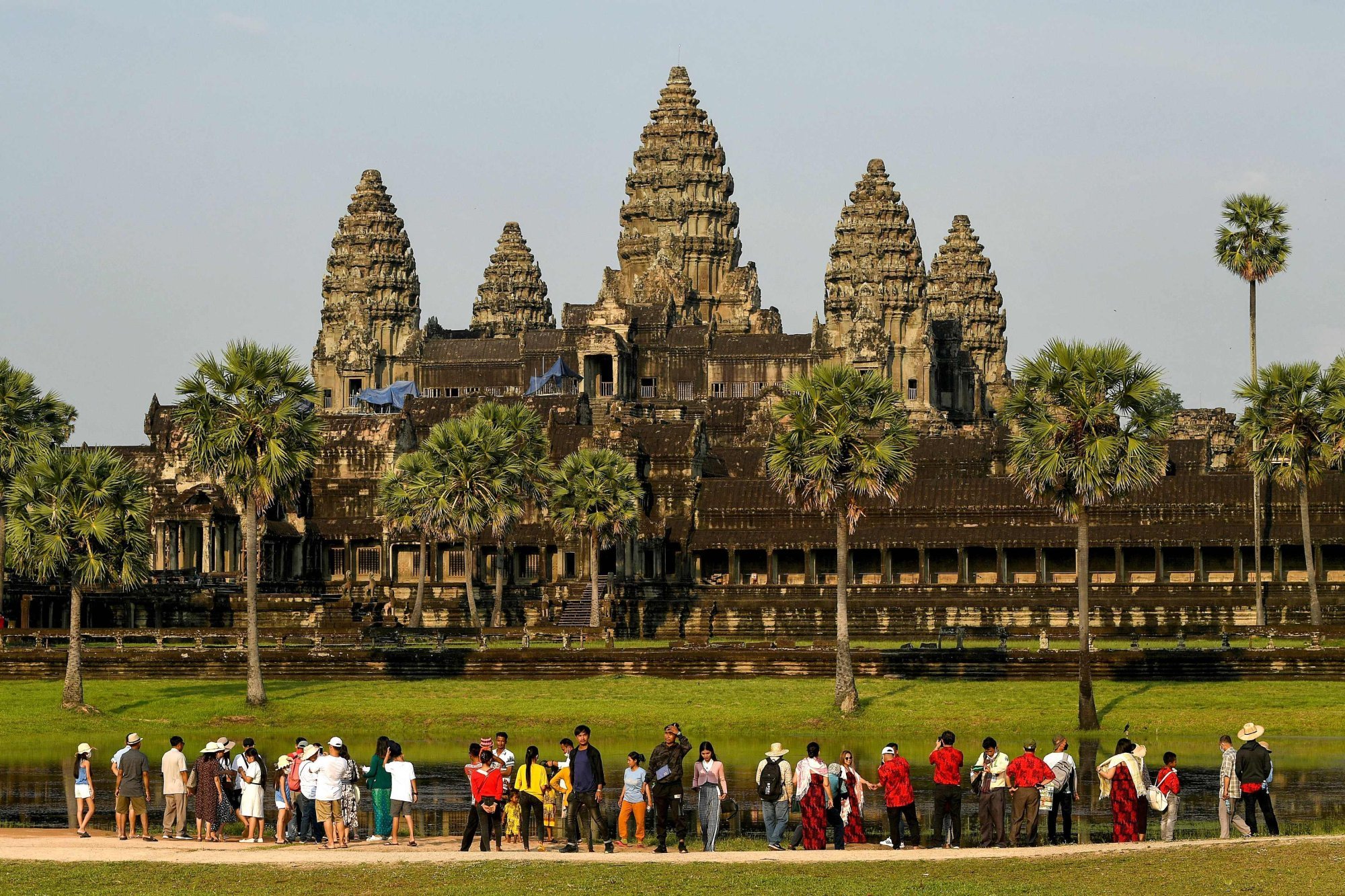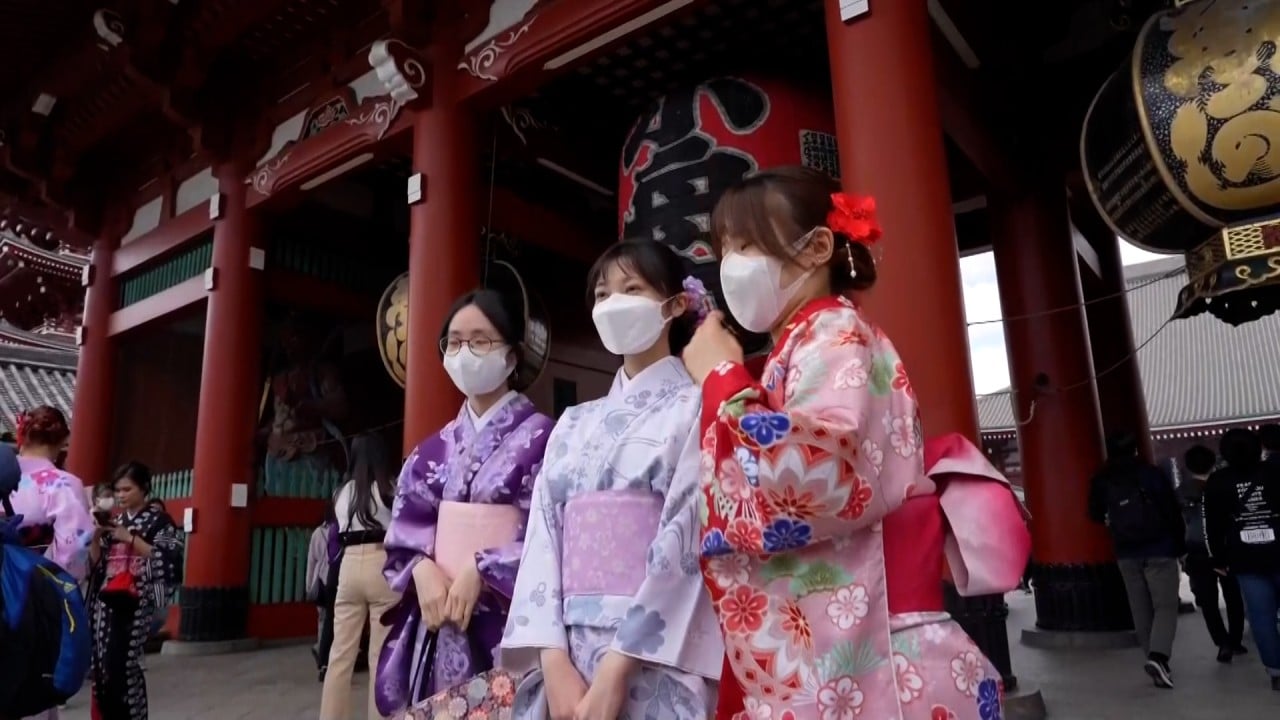
Cambodia’s reopened Siem Reap sets its sights on a ‘quality’ tourist resurgence
- The gateway to Angkor Wat aims to triple its foreign tourist arrivals in 15 years, with a particular focus on ensuring rural communities share in the wealth
- Cambodia expects to welcome 1 million international visitors this year, as hostels in the capital and other tourists hotspots report nearing full capacity
Cambodia’s Angkor Wat is bouncing back, with an eco-friendly face.
Siem Reap, the gateway to the ruins of Angkor, aims to triple its number of international tourist arrivals over the next 15 years and use this tourism revenue to accelerate rural development, under a development plan drafted in the first year of the pandemic.
A US$150 million makeover of the city was completed in March, including widening and adding roads and highways, expanding broadband access, and creating bicycle lanes along the river that meanders through it.
“Siem Reap’s downtown and surroundings, as well as the Angkor Wat heritage park, now have a new face,” said Thourn Sinan, president of the Cambodian chapter of the Pacific Asia Travel Association. “This new face is a very effective way to attract more international tourists and convince them to stay longer.”
Travellers trickle into Hong Kong, a crowd returns to Singapore
Thourn said he was optimistic that Cambodia could become a “quality tourism” destination, as Siem Reap seeks to meet its development target of 7.5 million international tourists and 10.9 million domestic visitors per year by 2035.
The development plan’s primary goal of ensuring rural communities share in the tourism wealth is already being realised at Villa Chandara, the only fine-dining venue in the 400 sq km heritage park that surrounds Angkor Wat.
Under a unique business model developed by local organisation DineBeyond, a portion of the US$140 per-person charge for a five-course meal at the open-air gourmet restaurant and bar goes to upgrading the infrastructure of a nearby village where most of its employees live, said general manager Saryroth Chan.
Andrew Booth, founder of local tour operator AboutAsia, arrived in Cambodia from Britain in 2003 and recalled being startled by how little his guide was being paid compared to the amount he had spent on the trip. At the time, only 30 US cents of every tourist dollar spent in Siem Reap remained in the country, according to a report from the Cooperation Committee for Cambodia NGO group.
“Tourism was the second-largest industry in Cambodia and yet Siem Reap was the fourth-poorest province,” said Booth, who set up his own company to offer tours through villages, where residents were paid for ox-cart rides, fortune-telling and other services.
The former banker was made an Officer of the Order of the British Empire in 2017 for supporting children’s education in Cambodia through tourism.
“It’s desperately important for Cambodia to make tourism work,” Booth said. “To be more than a three-day destination it needs to diversify its sites, particularly wildlife sanctuaries and parks.”
Bali’s back – but so are the ‘trashy tourists’
Siem Reap welcomed 2.2 million international tourists in 2019, according to figures from the Tourism Ministry, but even this pre-pandemic figure was 15 per cent lower than the year before – while in 2020, just 400,000 foreign visitors came.
Even before the pandemic, Booth said he had noticed a move away from pre-packaged “zero-dollar” tourism, which mostly benefits only overseas tour operators, towards visitors staying for longer in the recently opened resort islands off the coast.
“There was a discernible move towards viewing Cambodia as a single, full-service destination and it will absolutely move that way. There is no doubt about it,” he said.
For the Pacific Asia Travel Association’s Thourn, the main obstacle has been connectivity, though he noted new, larger airports were opening in Siem Reap, Phnom Penh and the coastal province of Koh Kong. Currently, all three of Cambodia’s international airports have single runways, and Siem Reap’s cannot handle long-haul flights.
The new Chinese-funded airport about 45km away from Siem Reap is set to open by the end of next year with an initial capacity for 7 million annual passengers, rising to 20 million by 2050, according to Cambodian aviation officials.

Tourism’s return
Thanks largely to a successful inoculation campaign and the scrapping of quarantine rules in March for vaccinated visitors, tourism in Cambodia is recovering.
Alex Darroche, co-founder of the Mad Monkey chain of hostels, said the company’s Phnom Penh venue was currently running at 90 per cent occupancy, with its resorts in Siem Reap and Koh Rong Samloem not far behind. Its venues in Thailand, meanwhile, have yet to reopen.
The luxury Shinti Mani Angkor and Bensley Collection Pool Villas started accepting bookings for its most expensive private villas in January, sales manager Sochea Uon said, with plans to reopen all its rooms by November.
Domestic tourist numbers are also swelling. More than 400,000 people visited Siem Reap – about twice its population – for Khmer New Year celebrations in April, most of whom were domestic tourists, according to the city’s tourism department.
Earlier this month, Cambodia’s Tourism Ministry revised its forecast for this year’s international arrivals to 1 million from the previous estimate of 700,000 – the former number equalling the amount of foreign tourists the country welcomed in 2004.

Still, after more than two years, the return of tourists is being celebrated, even outside the city.
Tek Lam, a resident of Banteay Cheu village, said the jets descending into nearby Siem Reap International Airport were a relief rather than noise pollution. “It’s the sound of tourists returning,” she said.
Since 2013, Tek has served fresh coconuts to people who stop at the stall in front of her home, and teaching them how to weave palm leaves dyed a kaleidoscope of colours into keychain-sized fish and birds for US$2 each.
Before the pandemic she earned US$200 to US$300 a month – enough to hook her home up to the electricity grid, add an outdoor shower stall, and ensure she could cover the payments required for her 16 grandchildren to graduate from high school.
But like many families in the village of 450 or so households, she saw this source of income dry up completely during the pandemic.
“For the first year we were terrified of Covid, but in the second we feared hunger,” she said. “We had to forage fields and streams for things we would not normally eat.”
Tourists cycling around the outer edges of the Angkor Archaeological Park began returning to Tek’s village in April.
Now she is back earning money, while DineBeyond’s Saryroth Chan says she is hopeful Villa Chandra will break even by the end of the year, so that they can open a new restaurant in another village.

